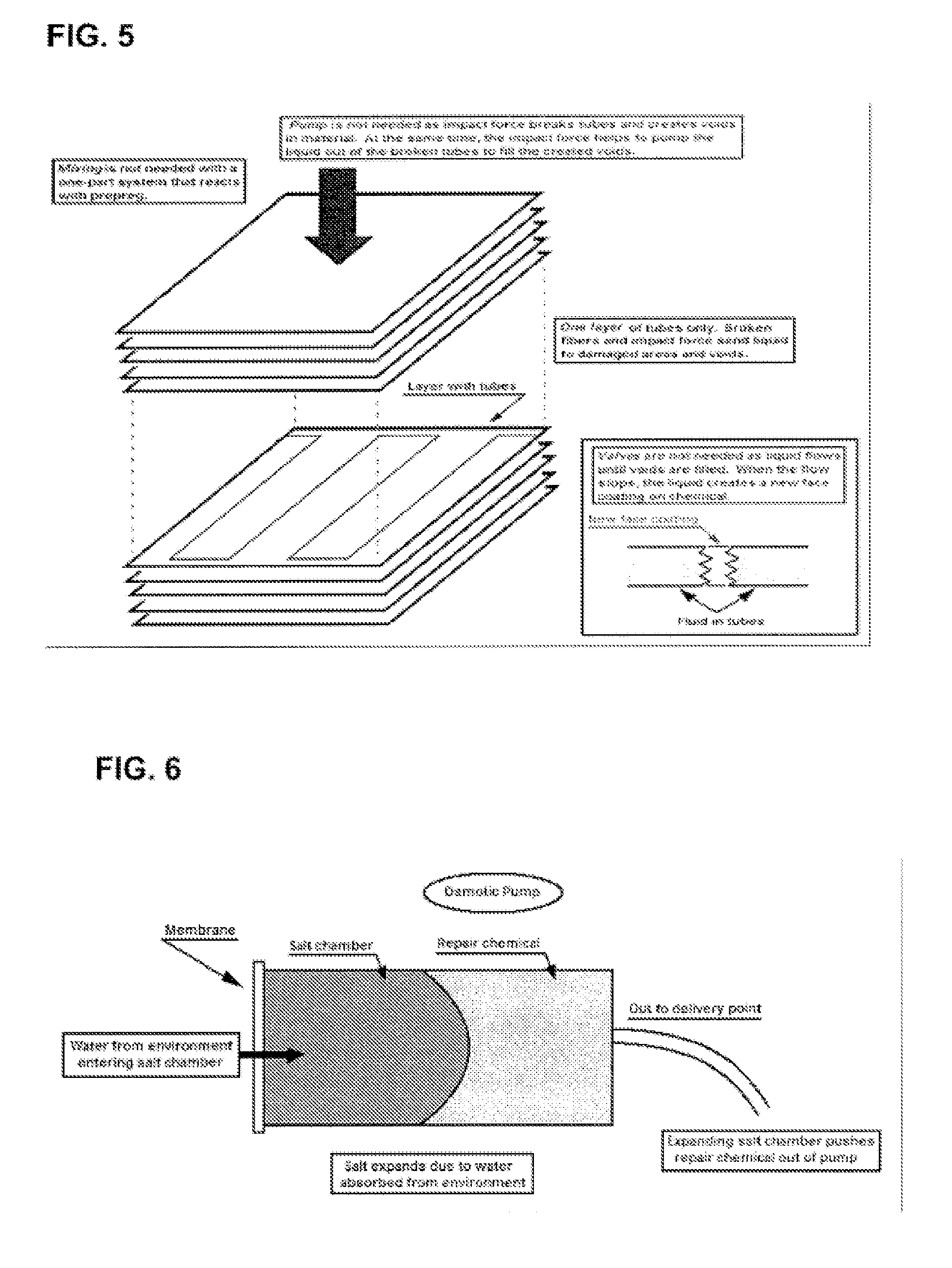Multiple function, self-repairing composites with special adhesives
- Summary
- Abstract
- Description
- Claims
- Application Information
AI Technical Summary
Benefits of technology
Problems solved by technology
Method used
Image
Examples
Embodiment Construction
[0066] The present disclosure provides various solutions and elements to solve problems associated with the prior art. The repair system of this disclosure provides in situ energy management within the shaped composite, regulating dynamic fluid flow, energy flow and chemical reactions within the composite over time. The present disclosure provides various elements, such as processing of the products under heat, development of adequate repair chemicals in terms of heat resistance, speed of repair, and simple in-situ systems which use the energy and chemical flow in a circulation system to repair well, systems to repair medium to high impact damage, fatigue damage, as well as self forming / self repairing composites as well as other multiple function applications. This disclosure provides, for example, the use of smaller repair conduits, the use of integral channels as well as separate repair fibers, and the conduits could be woven, interwoven or nested with other repair fibers or with ...
PUM
| Property | Measurement | Unit |
|---|---|---|
| Temperature | aaaaa | aaaaa |
| Temperature | aaaaa | aaaaa |
| Fraction | aaaaa | aaaaa |
Abstract
Description
Claims
Application Information
 Login to View More
Login to View More - R&D
- Intellectual Property
- Life Sciences
- Materials
- Tech Scout
- Unparalleled Data Quality
- Higher Quality Content
- 60% Fewer Hallucinations
Browse by: Latest US Patents, China's latest patents, Technical Efficacy Thesaurus, Application Domain, Technology Topic, Popular Technical Reports.
© 2025 PatSnap. All rights reserved.Legal|Privacy policy|Modern Slavery Act Transparency Statement|Sitemap|About US| Contact US: help@patsnap.com



